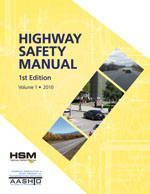JohnRBaker
Mechanical
- Jun 1, 2006
- 37,134
I know this doesn't look like it belongs here, but I'm not sure where else to post it since I think the subject matter deserves to be discussed, and besides, once you read the item you'll see that it's indirectly related to the pedestrian bridge failure in Florida. Note that I didn't post this in that thread because A, it's already too long, and B, to get any sort of traction, it would have to distract from the discussion already underway there, thus becoming an off-topic pain in the arse.
Anyway, my question is, "Can engineers engineer safety?" Now I'm not talking about making a machine or a building safe, but rather to try and accomplish what the article is talking about; to engineer our surroundings so as to make it safe for individuals, in this case, to reduce the incident of pedestrian deaths on America's streets and roadways.
Why This State Thinks Engineers Can Save Pedestrians’ Lives
Nearly 6,000 pedestrians were killed in 2016 — the highest toll since the early 1990’s. The problem is increasingly concentrated in certain states.
Now if someone can suggest a better forum for this topic to be discussed, please let me know and I'll gladly ask that this thread be moved forthwith.
John R. Baker, P.E. (ret)
EX-Product 'Evangelist'
Irvine, CA
Siemens PLM:
UG/NX Museum:
The secret of life is not finding someone to live with
It's finding someone you can't live without
Anyway, my question is, "Can engineers engineer safety?" Now I'm not talking about making a machine or a building safe, but rather to try and accomplish what the article is talking about; to engineer our surroundings so as to make it safe for individuals, in this case, to reduce the incident of pedestrian deaths on America's streets and roadways.
Why This State Thinks Engineers Can Save Pedestrians’ Lives
Nearly 6,000 pedestrians were killed in 2016 — the highest toll since the early 1990’s. The problem is increasingly concentrated in certain states.
Now if someone can suggest a better forum for this topic to be discussed, please let me know and I'll gladly ask that this thread be moved forthwith.
John R. Baker, P.E. (ret)
EX-Product 'Evangelist'
Irvine, CA
Siemens PLM:
UG/NX Museum:
The secret of life is not finding someone to live with
It's finding someone you can't live without


![[thumbsup2] [thumbsup2] [thumbsup2]](/data/assets/smilies/thumbsup2.gif)

